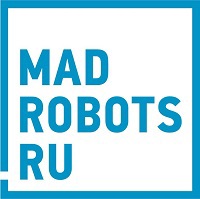Google wants to make the Internet of things manageable without apps
A couple of days ago, Google announced the project The Physical Web (“Material Web”), the purpose of which is to invent a new standard that will allow you to interact with the Internet of things without installing applications.

It's like a magic wand for the Internet of things.
The development of the Internet is becoming increasingly spiral-shaped: thanks to broadband Internet, the concept of “everything is online” has almost triumphed, replacing desktop applications with online services available through a browser, but the new era of mobile Internet has not only returned us to the era of email clients , but brought fashion to individual programs for reading specific sites. And now history is entering a new round: this time the wind of change has blew out from the side of the Internet of things.
One of the differences between the Internet of things and the regular Internet is that each “thing” (not the most embarrassing translation of the word thing in this case, but what to do) requires a separate application to manage it. As the number of smart objects surrounding us grows, the number of applications needed to manage each of them will soon exceed the limits of the reasonable or available memory of user gadgets. This is not very practical, especially when it is not a matter of regular needs, but a sudden need.
Let's say a vending machine with drinks met on the road in hot weather. If you imagine that he, too, has become part of the Internet of things, then most likely an attempt to buy a product without having to go into your wallet for money or a card will require installing an application that will debit money from the linked account. But how much more convenient would it be if you could buy a bottle of water bypassing the appstores, using your smartphone / watch / glasses / microchip directly in your head?
Reasoning in this way, Google decided to develop a new open standard that will connect user gadgets and the objects of the “Internet of things” surrounding it to a network that really resembles the Internet - where you do not need any applications except a browser to get the necessary information. Not surprisingly, the Chrome browser team, led by Google front-end designer Scott Jenson, is busy developing the standard. We can say that the goal of the project is to develop a standard that will allow you to create browsers for the Internet of things in order to transfer the familiar experience of Internet surfing to the real world: interaction on demand - passing by a bus stop, vending machine, car rental, etc. - interact with them without applications.
Development is completely open: projectavailable at github . Developers rightly assume that an open standard has more chances to become generally accepted.
source
via
This news was not just
found on the company’s blog [ suggest andorro news ]







It's like a magic wand for the Internet of things.
The development of the Internet is becoming increasingly spiral-shaped: thanks to broadband Internet, the concept of “everything is online” has almost triumphed, replacing desktop applications with online services available through a browser, but the new era of mobile Internet has not only returned us to the era of email clients , but brought fashion to individual programs for reading specific sites. And now history is entering a new round: this time the wind of change has blew out from the side of the Internet of things.
One of the differences between the Internet of things and the regular Internet is that each “thing” (not the most embarrassing translation of the word thing in this case, but what to do) requires a separate application to manage it. As the number of smart objects surrounding us grows, the number of applications needed to manage each of them will soon exceed the limits of the reasonable or available memory of user gadgets. This is not very practical, especially when it is not a matter of regular needs, but a sudden need.
Let's say a vending machine with drinks met on the road in hot weather. If you imagine that he, too, has become part of the Internet of things, then most likely an attempt to buy a product without having to go into your wallet for money or a card will require installing an application that will debit money from the linked account. But how much more convenient would it be if you could buy a bottle of water bypassing the appstores, using your smartphone / watch / glasses / microchip directly in your head?
Reasoning in this way, Google decided to develop a new open standard that will connect user gadgets and the objects of the “Internet of things” surrounding it to a network that really resembles the Internet - where you do not need any applications except a browser to get the necessary information. Not surprisingly, the Chrome browser team, led by Google front-end designer Scott Jenson, is busy developing the standard. We can say that the goal of the project is to develop a standard that will allow you to create browsers for the Internet of things in order to transfer the familiar experience of Internet surfing to the real world: interaction on demand - passing by a bus stop, vending machine, car rental, etc. - interact with them without applications.
Development is completely open: projectavailable at github . Developers rightly assume that an open standard has more chances to become generally accepted.
source
via
This news was not just
found on the company’s blog [ suggest andorro news ]






